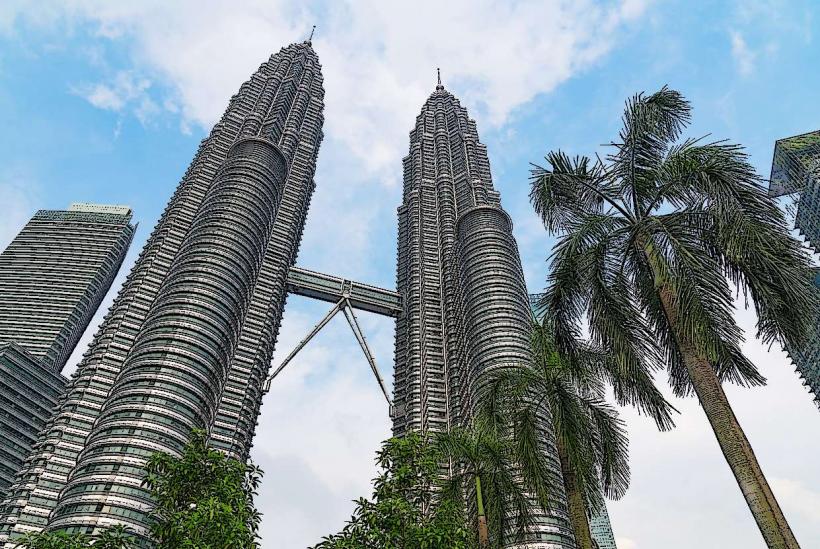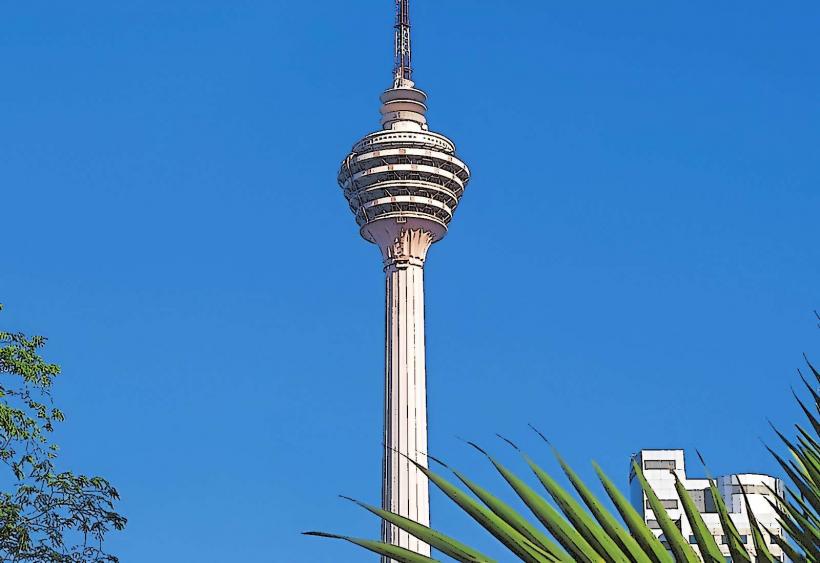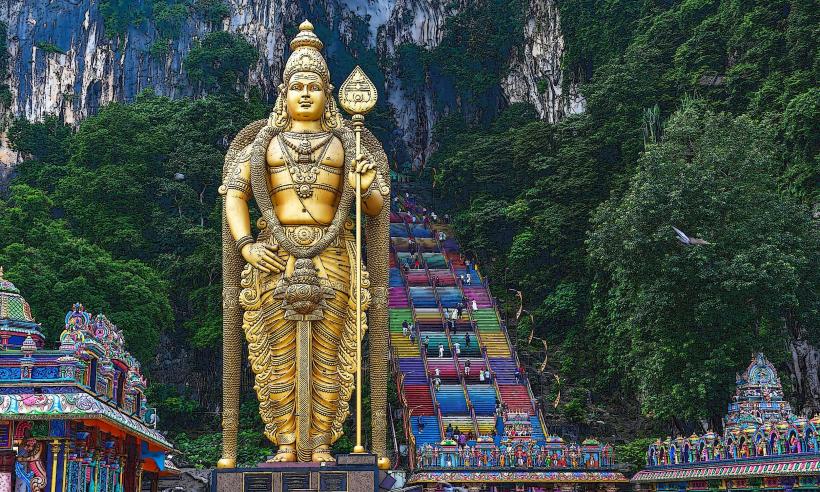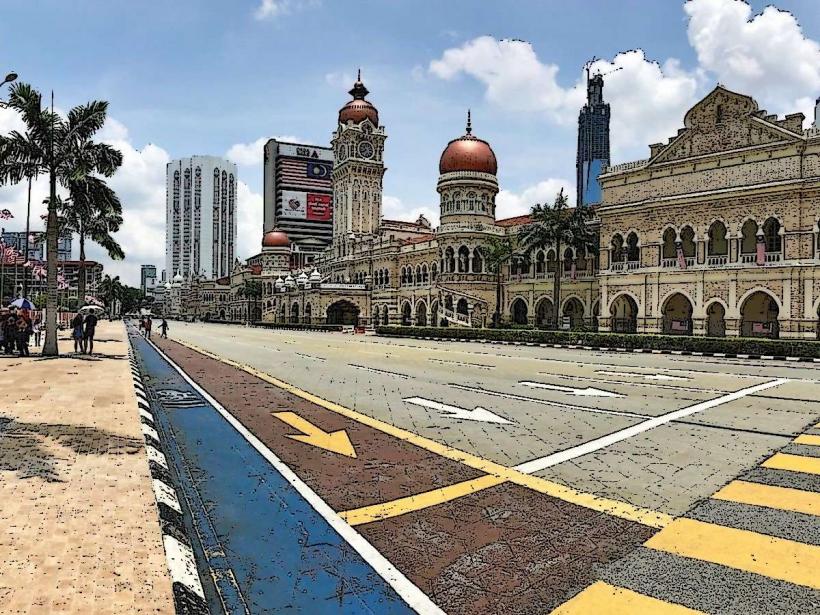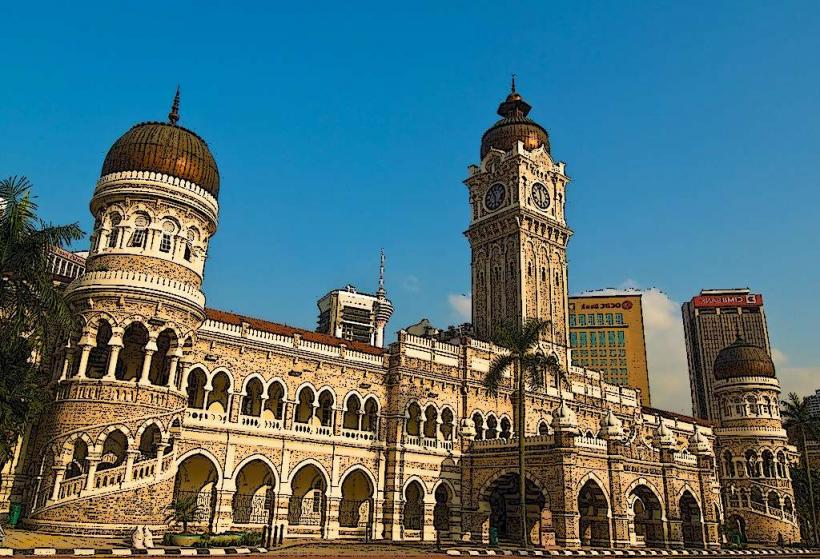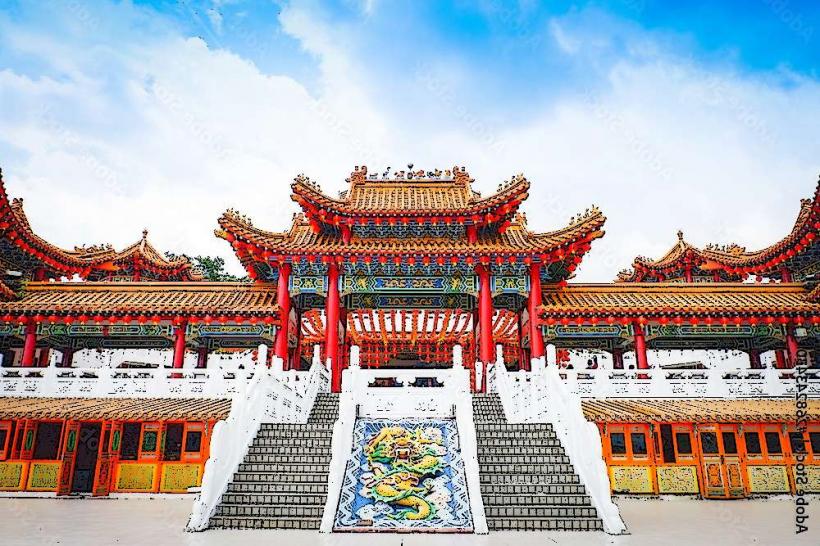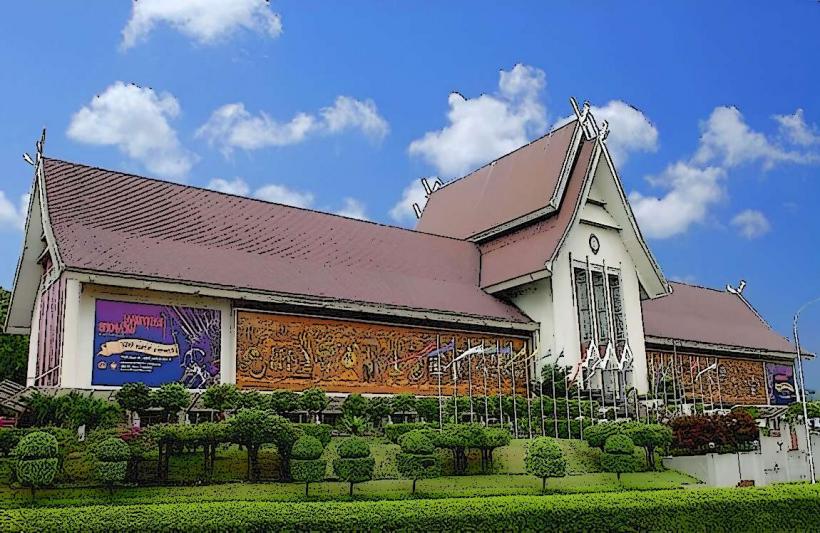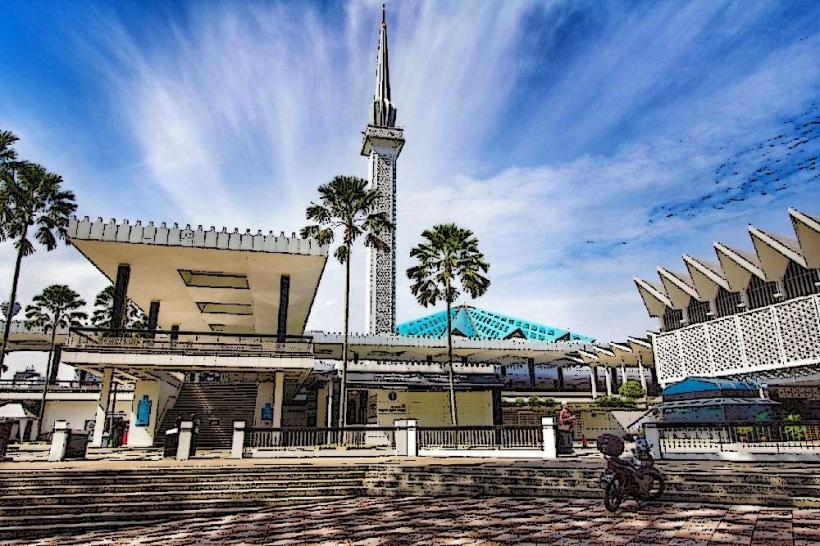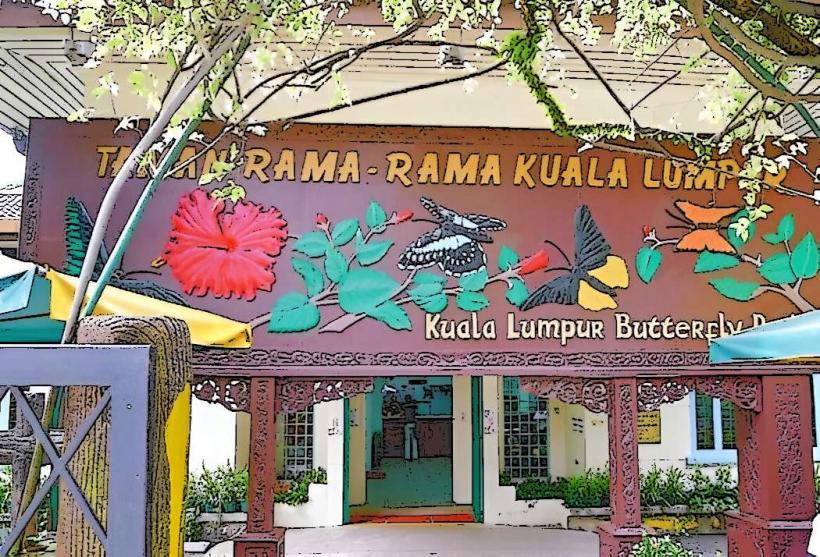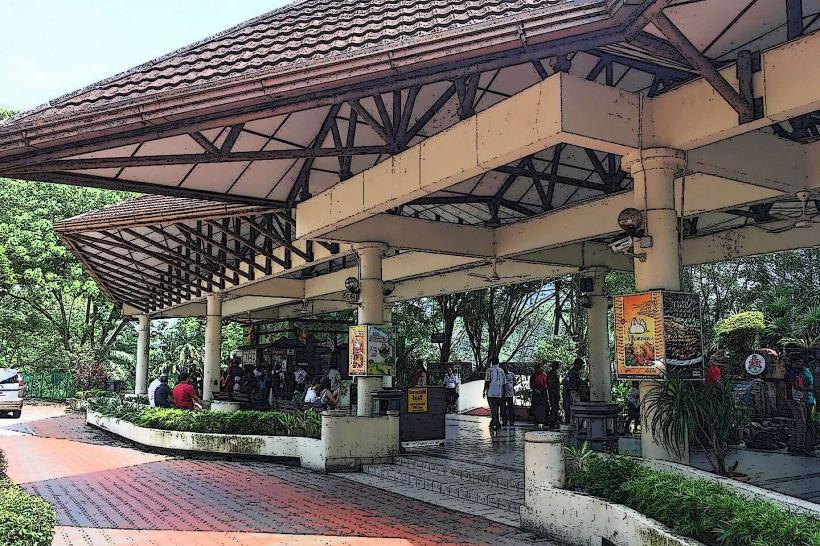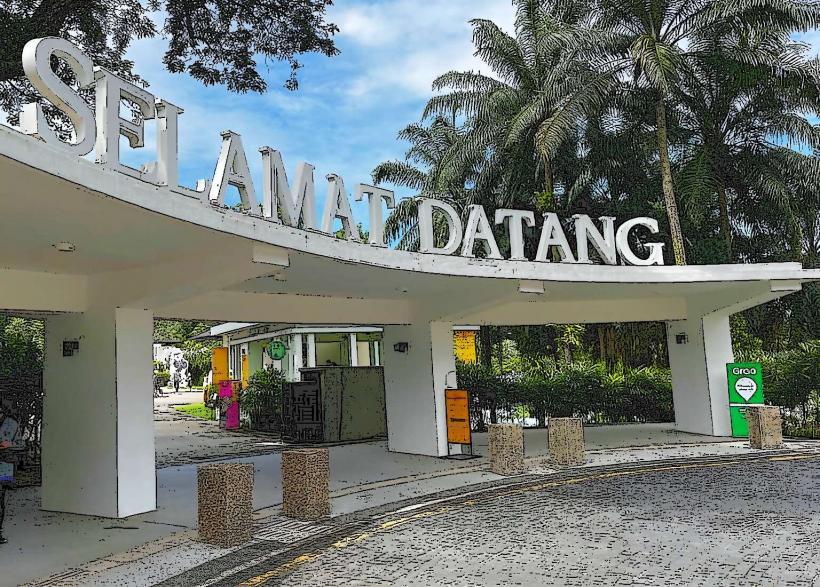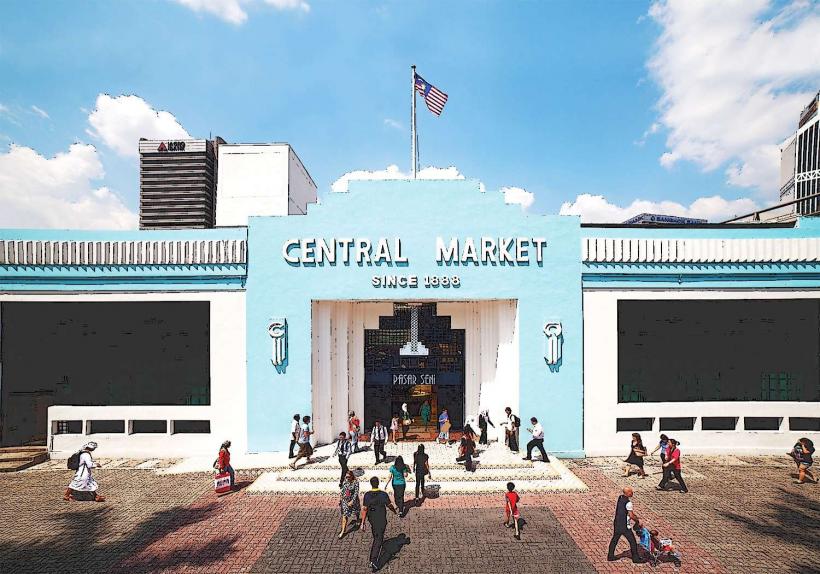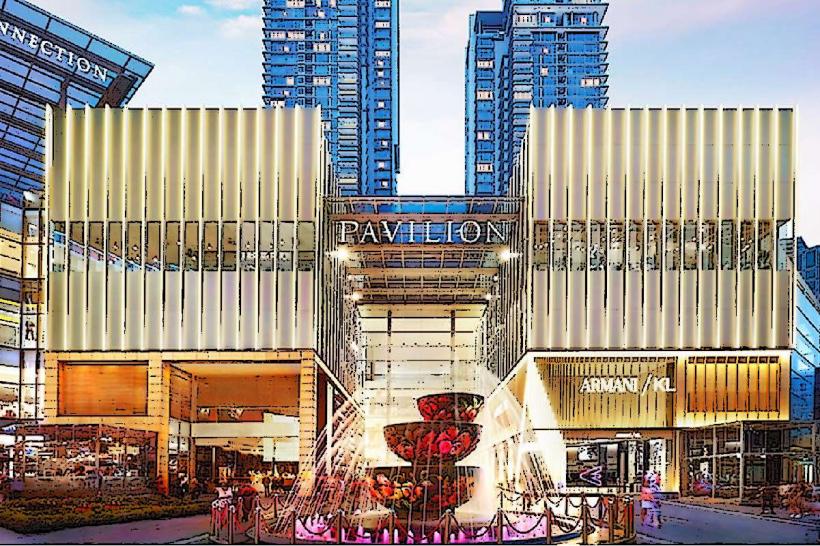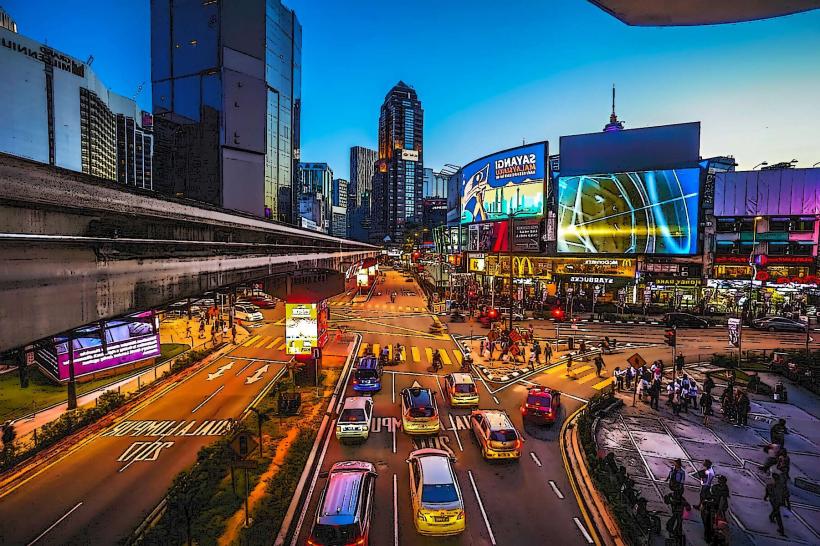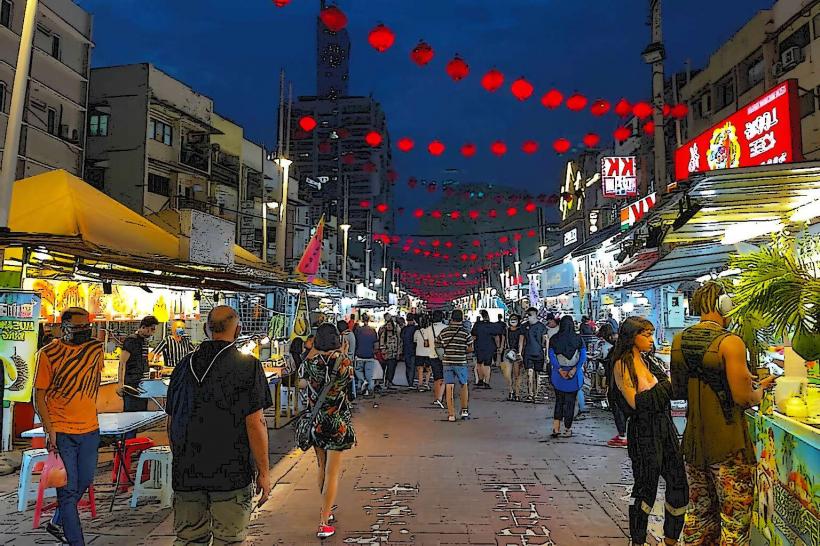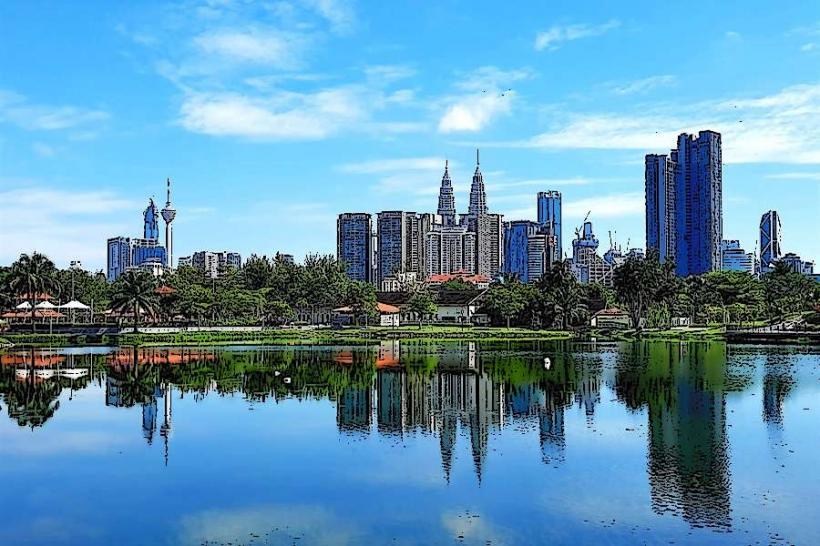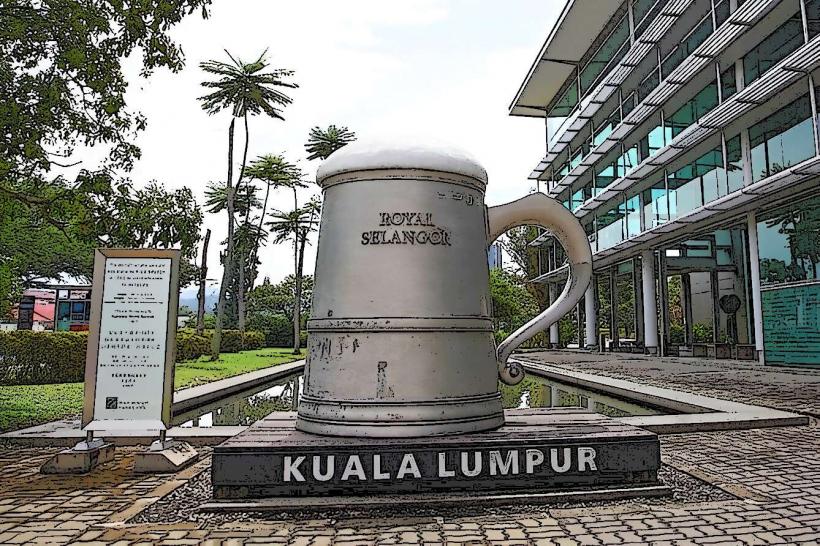Information
Landmark: Islamic Arts Museum MalaysiaCity: Kuala Lumpur
Country: Malaysia
Continent: Asia
The Islamic Arts Museum Malaysia (Muzium Seni Islam Malaysia) is one of the largest museums in Southeast Asia dedicated to the collection, conservation, and exhibition of Islamic art. It is an iconic institution located in Kuala Lumpur and serves as a significant cultural and educational landmark.
1. Overview
- Name: Islamic Arts Museum Malaysia (Muzium Seni Islam Malaysia)
- Location: Jalan Lembah Pantai, Kuala Lumpur, Malaysia
- Established: 1998
- Architectural Style: Islamic and contemporary architecture, with traditional and modern influences
- Type: Art Museum focusing on Islamic arts and culture
- Significance: The museum is home to a vast collection of Islamic art, ranging from ceramics and calligraphy to textiles and architectural models, reflecting the cultural diversity and richness of the Islamic world.
2. Architecture
- The museum is housed in a spacious and modern building designed to reflect Islamic architectural styles, with geometric patterns, arches, and decorative tile work inspired by Islamic and Middle Eastern architecture.
- The building’s exterior features Islamic motifs, and inside, the layout follows the principles of Islamic geometric design, offering a calm, reflective atmosphere for visitors.
3. Collections and Galleries
The Islamic Arts Museum Malaysia is divided into multiple galleries, each focused on specific aspects of Islamic art, history, and culture. Below are some of the main galleries and their collections:
1. Islamic Architecture Gallery
- This gallery highlights the architectural heritage of the Islamic world. It includes models of famous mosques and buildings, such as the Dome of the Rock in Jerusalem and the Great Mosque of Cordoba in Spain.
- The collection also features intricately designed tiles, mosaics, and architectural details from various Islamic empires, showcasing how architecture has evolved across regions.
2. Islamic Calligraphy Gallery
- One of the most significant collections at the museum, this gallery displays some of the finest examples of Arabic calligraphy. It includes manuscripts, verses from the Quran, and decorative scripts used in both religious and secular contexts.
- The gallery offers insights into the importance of calligraphy in Islamic culture, as it is regarded as one of the highest forms of art in the Islamic world.
3. Textiles Gallery
- The Textiles Gallery features a diverse collection of Islamic textiles, including embroidered fabrics, carpets, and clothing. The gallery showcases exquisite Persian carpets, Ottoman robes, and Central Asian textiles, highlighting the craftsmanship and cultural significance of textiles in the Islamic world.
4. Jewelry and Metalwork Gallery
- This section of the museum displays a stunning collection of Islamic jewelry, metalwork, and coins. Visitors can admire intricately designed jewelry, including gold and silver pieces, and metal artifacts such as vases, plates, and weaponry, each reflecting the artistry and functionality of Islamic craftsmanship.
5. Ceramics Gallery
- The Ceramics Gallery houses a vast range of Islamic pottery and ceramics. The collection includes tiles, vases, plates, and bowls from various periods, such as the Abbasid, Mamluk, and Ottoman eras.
- It highlights the role of ceramics in Islamic culture, particularly the distinctive styles and designs developed in regions like Persia, Turkey, and the Arabian Peninsula.
6. South Asian Islamic Art Gallery
- This gallery focuses on the rich tradition of Islamic art in the Indian subcontinent. It features miniature paintings, Mughal artifacts, and carpets, illustrating the fusion of Islamic and Indian artistic styles during the Mughal Empire.
7. Chinese Islamic Art Gallery
- The museum also includes a collection dedicated to Islamic art in China, showing the blend of Islamic and Chinese styles in the region. The gallery features porcelain, calligraphy, and decorative items that reflect the integration of Islamic culture with Chinese traditions.
8. Contemporary Islamic Art Gallery
- This gallery highlights modern and contemporary Islamic art from various artists around the world. It provides insight into how Islamic artists today are continuing to evolve traditional forms while introducing new media and concepts into their work.
9. The Quran and Manuscripts Gallery
- A major highlight of the museum is the Quran and Manuscripts Gallery, where rare and beautifully illustrated Qurans from various historical periods are displayed. The collection includes ancient manuscripts and Quranic fragments, some of which date back hundreds of years, showcasing the evolution of Quranic writing and illustration across different cultures.
4. Key Highlights
1. Rare Quranic Manuscripts
- The museum is home to a collection of some of the oldest and most valuable Quranic manuscripts, including a copy of the Quran from the Ottoman period, Persian script manuscripts, and decorative Quran pages.
2. Mamluk-era Metalwork
- The museum’s collection includes stunning metalwork from the Mamluk period, particularly brass vessels and jewelry, known for their delicate craftsmanship and intricate designs.
3. Persian Carpets
- The Persian carpets on display are a highlight, showcasing the expertise of Persian weavers in creating highly intricate patterns that tell stories of the Safavid dynasty and other historical periods.
4. Islamic Calligraphy
- The museum’s collection of calligraphy is considered one of the most important in the region, featuring works from different periods and regions, with detailed and ornate Kufic and Naskh scripts.
5. Educational Programs and Activities
1. Workshops
- The museum regularly organizes workshops for children and adults, focused on learning the techniques behind Islamic arts, such as calligraphy, tile making, and textile design.
2. Lectures and Events
- The museum hosts lectures, cultural programs, and Islamic art exhibitions throughout the year. These events allow visitors to engage with experts and scholars in Islamic art and culture.
3. Guided Tours
- Guided tours are available for visitors, where museum experts provide deeper insights into the history, significance, and cultural context of the exhibits.
6. Visiting Information
Opening Hours
- Monday to Thursday: 10:00 AM – 6:00 PM
- Friday: 10:00 AM – 12:00 PM, 3:00 PM – 6:00 PM
- Saturday and Sunday: 10:00 AM – 6:00 PM
Admission Fees
- Adults: RM 14
- Children (under 12): Free
- Students and Seniors: RM 7
Location
- Address: Islamic Arts Museum Malaysia, Jalan Lembah Pantai, Kuala Lumpur, Malaysia.
Accessibility
- The museum is easily accessible by public transport from Kuala Lumpur city center, with nearby LRT and bus stations. There is parking available on-site for visitors who drive.
7. Nearby Attractions
- National Mosque (Masjid Negara): A stunning mosque with beautiful Islamic architecture located just a short walk from the museum.
- Lake Gardens (Taman Tasik Perdana): A large park with lakes and gardens for relaxation, adjacent to the museum.
- National Museum (Muzium Negara): A historical museum showcasing Malaysia's cultural heritage, located nearby.
8. Interesting Facts
Foundation: The Islamic Arts Museum Malaysia was established in 1998 as part of efforts to promote Islamic art and culture within Malaysia and the broader Southeast Asian region.
Size of the Museum: The museum spans over 30,000 square feet, making it one of the largest museums dedicated to Islamic art in the world.
International Recognition: The museum is regarded as one of the leading institutions for Islamic art and has earned recognition for its extensive collections and educational programs.
The Islamic Arts Museum Malaysia stands as a beacon of the Islamic cultural and artistic legacy, offering a deep and comprehensive exploration of Islamic civilization across the world. It is an essential stop for anyone interested in Islamic art, culture, and history, providing a unique and enriching experience in Kuala Lumpur.

